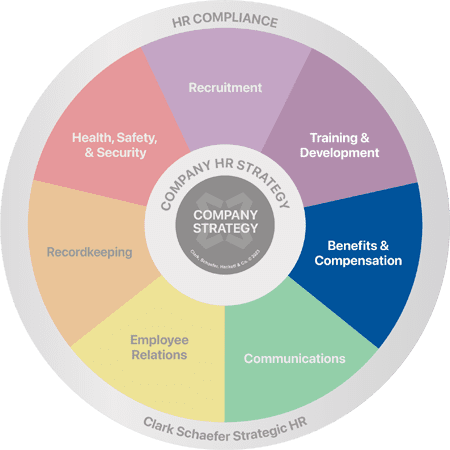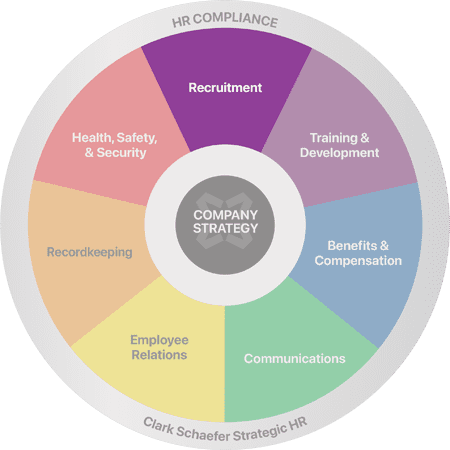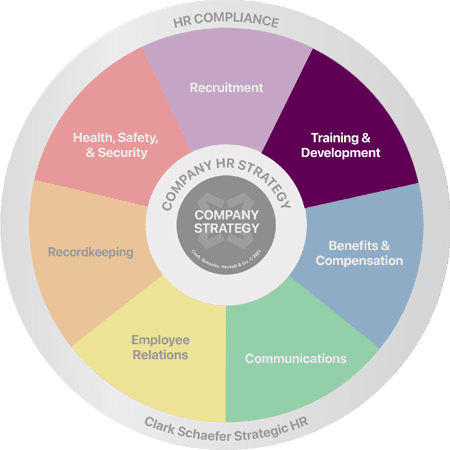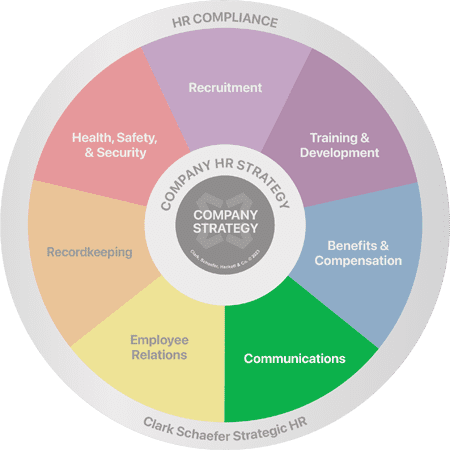How Can We Address Pay Compression?
Last Updated on March 1, 2024 / Benefits & Compensation
HR Question:
To remain competitive in the marketplace, our company’s upper management decided to raise our minimum rate of pay. Unfortunately, HR was not included in this decision that has now led to salary compression and angry seasoned workers. How do you recommend for our human resources team to handle this?
HR Answer:
This is a challenging situation that you find yourself in, and you’re not alone in this struggle. In the tight labor market that we’re experiencing, many companies are struggling to find qualified workers to fill their open positions. As a result, many organizations have had to reevaluate their employer value proposition in order to attract and retain the best employees. Evaluating salary competitiveness is an important component in this process to ensure that you’re meeting candidates’ expectations. However, in doing so, it’s important to also consider the pay rates of your current workforce and how changes might impact them. Otherwise, an organization could risk dealing with salary compression issues just as you are.
What is pay compression?
For those who may not be familiar with the term, pay or salary compression occurs when the pay of newer or lower-skilled workers approaches the pay of your more seasoned and/or experienced workers. Pay compression can lead to disharmony and lessen engagement in the workplace as the more tenured workers feel less valued for the contributions they have made and continue to make to the company. We are seeing this happen more frequently as the competition for talent remains at a consistent and long-term high, many companies are finding it necessary to raise starting pay to attract the workers that they need. However, at the end of the day, pay and pay equity matters not just to those you are trying to recruit, but also those who are part of your existing workforce.
If you’re wondering how employees found out about the salary discrepancies, let’s face it – employees talk. Even though your company may frown upon it, this activity is protected under the rules of the National Labor Relations Board (NLRB) which enforces the National Labor Relations Act (NLRA). The NLRA protects employees’ rights to discuss conditions of employment, such as safety and pay, even if you’re a non-union employer. The NLRB considers these discussions “protected concerted activity” and defines them as when employees “take action for their mutual aid or protection regarding terms and conditions of employment.”
How can you repair the damage of salary compression?
It’s unfortunate that HR wasn’t brought into the decision-making process prior to implementing the new salary changes. On the surface, it probably seemed that raising the company’s minimum pay rate could only lead to positive results. It probably did make a positive impact on your talent acquisition efforts. However, it may lead to a serious retention issue for your experienced workers if it goes unaddressed.
Our best advice at this point is to be honest with your employees. Provide them with the explanation that probably should have come before the new starting salary changes were implemented.
Here are some things to consider and/or information to address with your workforce:
- Be transparent. Help them to appreciate the reasoning behind the decisions that were made. Understanding the “why” goes a long way with accepting the outcome.
- Help them to understand the reality of the labor market and how difficult it has been for you to fill open positions.
- Share all of the other actions you have taken to attract new workers prior to (or in addition to) raising the starting salary.
- Remind them that you realize the longer positions are open, the longer the burden of work is spread across fewer hands. It is in their best interest that the open positions are filled as well.
- Let them know that you hear their concerns and share what you plan to do to address them.
If you are open about the decisions that have been made and why they were made, your employees will be able to see how you had to take action in order to attract the workforce that you need to keep your organization moving forward. Some may not like what they’re hearing, but it can help them to respect it.
To address the pay equity concerns that have been raised, you may want to do an analysis of your compensation structure and salary ranges to identify inconsistencies and to ensure you are in line with market trends, internal needs, and your company goals. For additional help, HR Daily Advisor has outlined steps you can take to address pay compression in your organization.
For organizations that are navigating through today’s difficult labor market and looking for ways to be more competitive, we urge you to involve human resources in your strategic planning. HR can help to assess the potential impact of decisions on your workforce and develop an appropriate communication plan to ensure a smooth implementation.
Strategic HR has the answers to all of your tough Benefits and Compensation related questions. Whether you need a job analysis of your positions or need to update (or write) job descriptions, Strategic HR can do the job. Please visit our Benefits & Compensation page for more information or Contact Us to discuss your needs.







